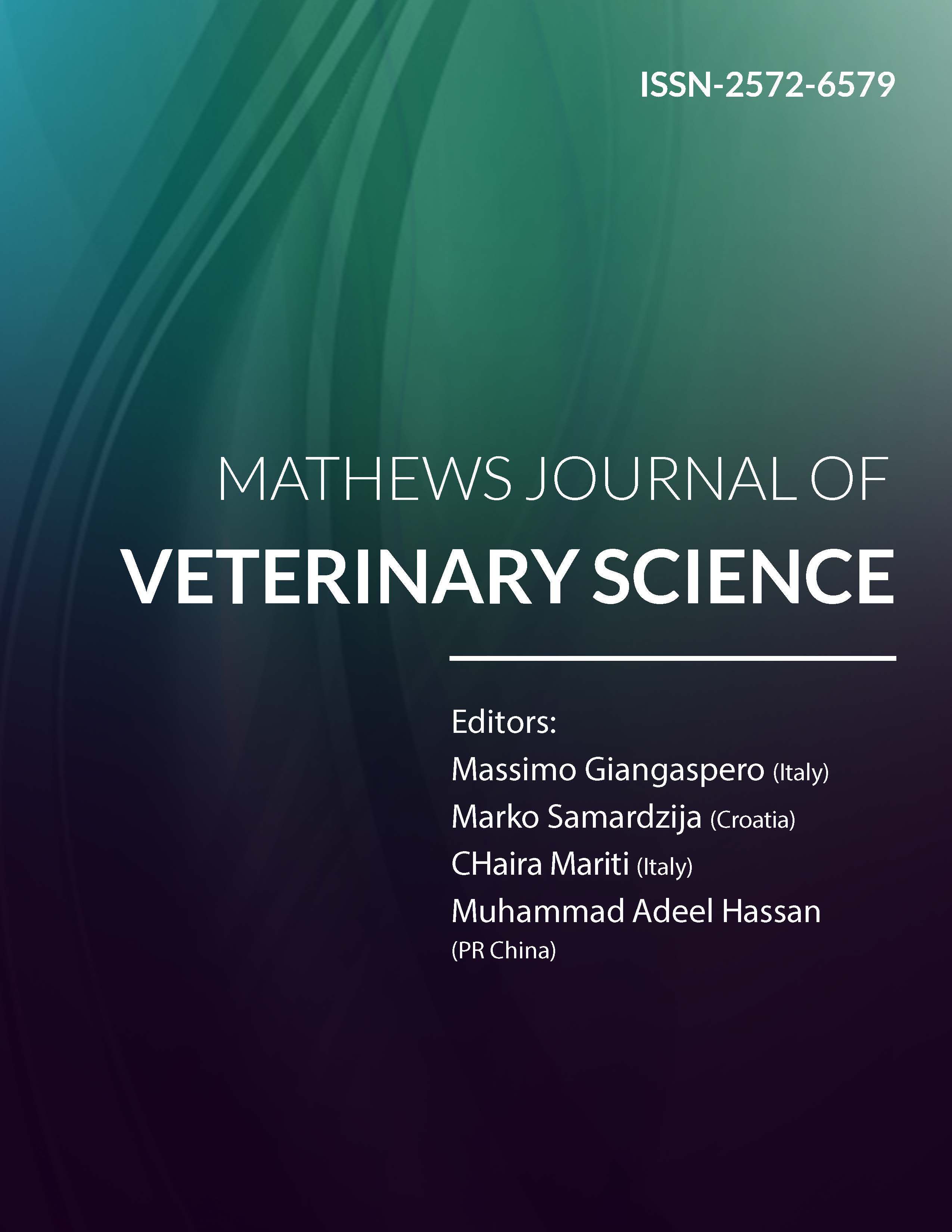
Information Links
Previous Issues Volume 6, Issue 1 - 2022
Diagnostic Techniques of Contagious Caprine Pleuropneumonia: A Review
Abdela Bulbula Ogeto*
Department of Bacterial Serology, Animal Health Institute, Sebeta, Oromia, Ethiopia
*Corresponding author: Abdela Bulbula Ogeto, Department of Bacterial Serology, Animal Health Institute, Sebeta, Oromia, Ethiopia; Tel: +251910398915; Email: [email protected]
Received Date: December 1, 2022
Publication Date: December 16, 2022
Citation: Ogeto AB. (2022). Diagnostic Techniques of Contagious Caprine Pleuropneumonia: A Review. Mathews J Vet Sci. 6(1):15.
Copyright: Ogeto AB. © (2022)
SUMMARY
Contagious caprine pleuropneumonia is an important disease of caprine in different parts of the world and can cause huge mortality in immunologically naive herds. Currently available methods for the diagnosis of contagious caprine pleuropneumonia include; clinical signs, postmortem examination, cultivation, serological assays, and molecular assays. Post-mortem examination reveals fibrinous pleuropneumonia with massive lung hepatization and pleurisy, accompanied by an increase of straw-colored pleural fluid. Confirmatory diagnosis is based on the isolation of Mycoplasma capricolum subspecies capripneumoniae. Serological tests to detect antibodies to this organism include complement fixation, latex agglutination, and competitive enzyme-linked immunosorbent assays. The complement fixation test remains the most widely used serological test for Contagious caprine pleuropneumonia, although the latex agglutination test is being progressively more used in diagnostic laboratories as well as a pen-side test. A specific competitive enzyme-linked immunosorbent assay has been developed but is not widely available. Thus, for diagnosing Contagious caprine pleuropneumonia, the gold standard test is the direct isolation and cultivation of M. capricolum subsp. capripneumoniae. Polymerase chain reaction-based tests have been described to be specific, sensitive and can apply to clinical material. In general, the present polymerase chain reaction and sequencing have been used to set up the molecular epidemiology of contagious caprine pleuropneumonia. Hence, the objective of this topic is to assess diagnostic techniques for contagious caprine pleuropneumonia. In conclusion; postmortem examination, latex agglutination, and polymerase chain reaction techniques are used, especially in specificity to confirm Diseases in outbreak and to help control rapidly. Despite difficulties in diagnosis focus on devising good and skilled technical expertise, and funding for proper diagnostic facilities in developing countries, including Ethiopia with a particular focus on both conventional diagnostics and advanced serological tests.
Keywords: contagious caprine pleuropneumonia, diagnostic tests, small ruminants, isolation, diagnosis